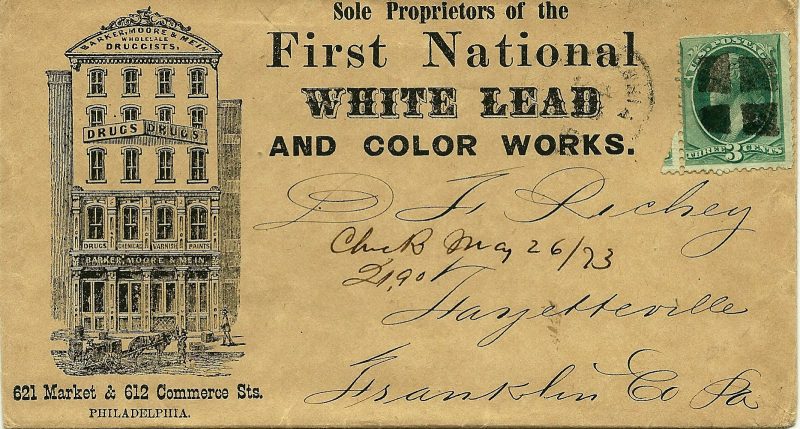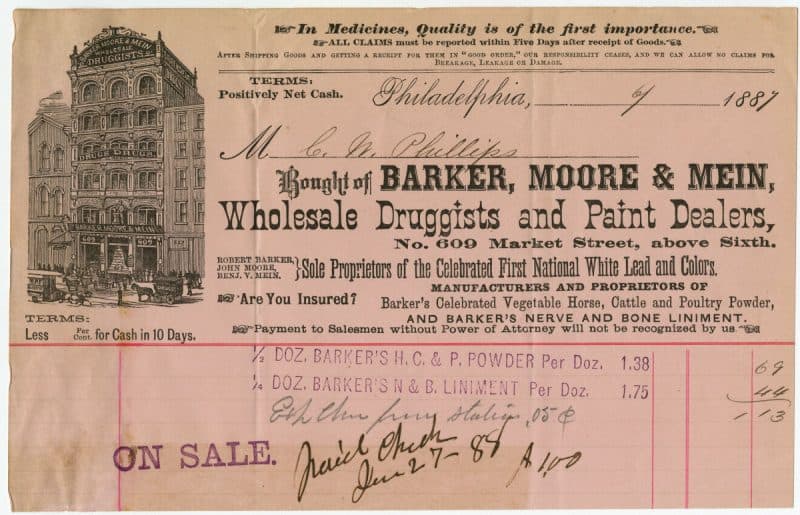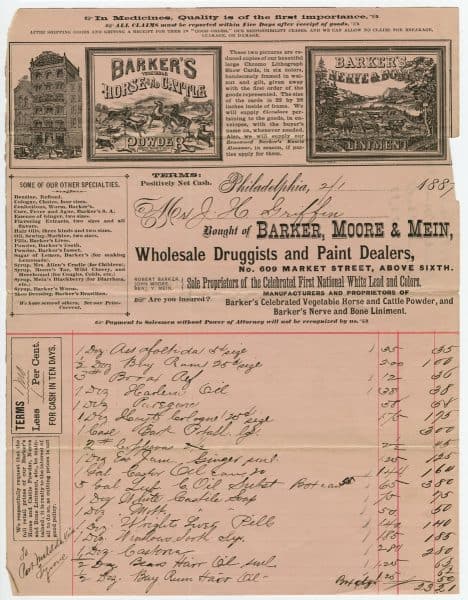Let’s Get the Lead Out, or Why Paints and Drugs Do Mix

First National White Lead and Color Works philatelic cover, 1873. Collection of Dr. Gus Spector.

Barker, Moore & Mein billhead, 1887. Helfand Graphic Popular Medicine Stationery Collection. Library Company of Philadelphia.

Barker, Moore & Mein billhead, 1887. Helfand Graphic Popular Medicine Stationery Collection. Library Company of Philadelphia.

Barker’s Komic Almanac philatelic cover, 1893. Collection of Dr. Gus Spector.
Library Company Volunteer
1314 Locust St., Philadelphia, PA 19107
TEL 215-546-3181 FAX 215-546-5167
http://www.librarycompany.org

Leave a Reply
Want to join the discussion?Feel free to contribute!